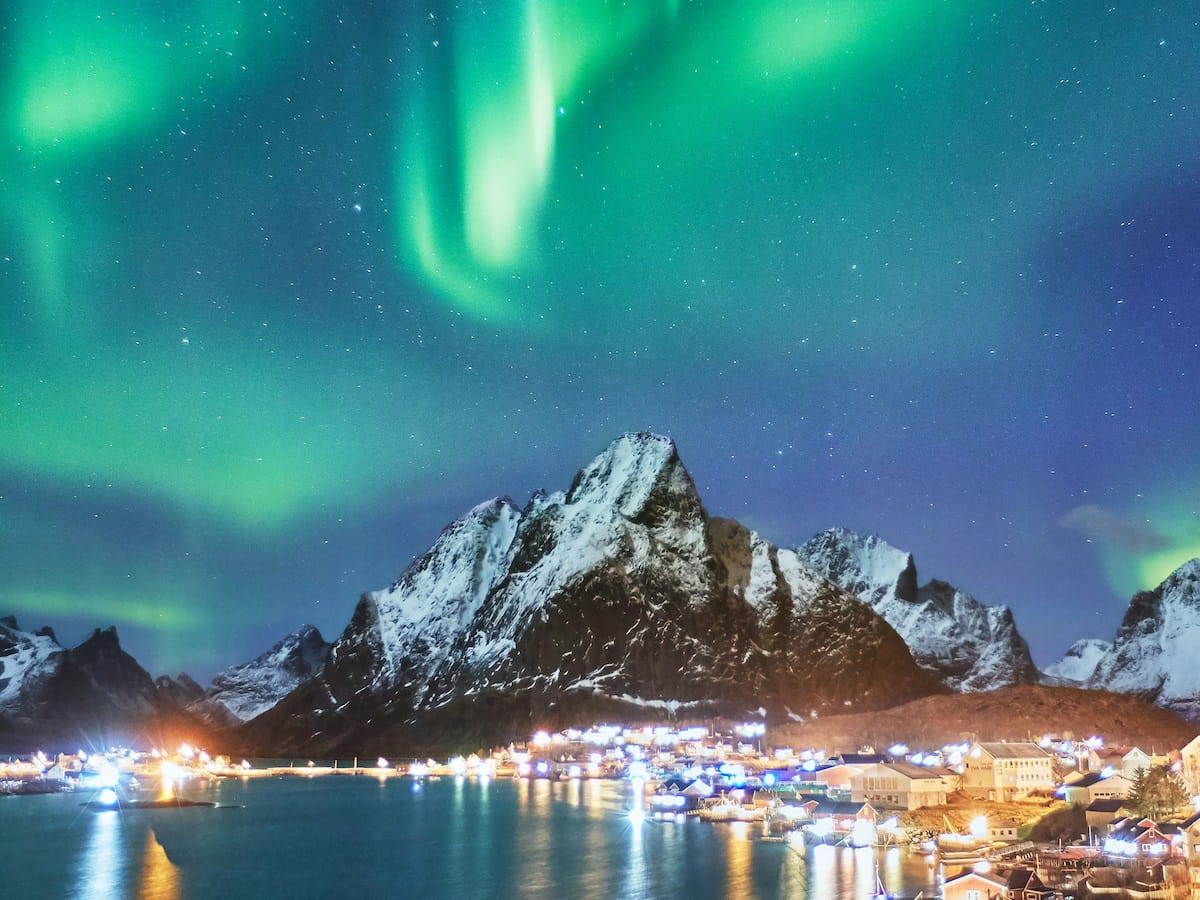The aurora borealis, more commonly known as the northern lights, is a celestial phenomenon that has captivated humanity for millennia. Its vibrant displays of dancing light and colors paint the night sky across the Arctic, leaving onlookers breathless with awe. But what exactly is happening to cause this mesmerizing spectacle?
The Mechanics of Nature’s Light Show
The magic of the northern lights lies in the energetic interplay between the sun and Earth’s atmosphere. Our sun is constantly releasing a stream of charged particles known as the solar wind. These particles, primarily electrons and protons, travel outward through the solar system at incredible speeds. While most of this “wind” harmlessly bypasses Earth, some encounters our planet’s magnetic field. The magnetic field is actually a protective shield generated by the churning motion of molten iron in Earth’s core.
The Earth’s magnetic field isn’t perfectly uniform. It’s strongest near the poles and weaker at the equator. This creates funnel-shaped regions called auroral ovals. When the solar wind interacts with this magnetic field, the charged particles get channeled towards the poles. As these energetic particles slam into the upper atmosphere, they collide with other atoms that make up the atmosphere. This interaction with molecules of oxygen and nitrogen (the largest components of our breathable atmosphere) causes a transfer of energy.
The energy transfer excites the atoms and molecules, pushing them into a higher energy state. However, this state is unstable, and the excited particles quickly return to their ground state. They release the excess energy in the form of light. The color of the aurora depends on which type of molecule is involved in the collision. Collisions with oxygen atoms primarily produce green and red auroras, while interactions with nitrogen molecules result in shades of blue and violet. It’s similar to how different causes cause different colors of neon lights.

Look Out for Solar Storms
Weather on earth causes storms that often have lightning. In a similar way, the “weather” of space causes this atmosphere lighting. Here’s what determines the intensity and form of the auroral displays:
- Solar Activity
The strength of the solar wind plays a crucial role. During periods of high solar activity, with more energetic particles being ejected, the auroras are brighter and more frequent. The solar cycle, a recurring pattern of sunspot activity, influences auroral displays with peaks roughly every 11 years. - Geomagnetic Storms
When particularly strong solar flares or coronal mass ejections (CMEs) erupt from the sun, they can trigger geomagnetic storms. These storms significantly enhance the intensity of the aurora, creating vibrant displays that may even reach lower latitudes. - Weather Conditions
Cloudy skies can obscure the view of the aurora. Clear, dark nights with minimal light pollution are ideal for aurora viewing.
Chasing the Elusive Lights
Firstly, we should say that auroral lights happen both in the north (aurora borealis) and in the south (aurora australis). So there are both northern and southern lights. However, most of the southern lights are over Antarctica, an uninhabited and remote area. The northern lights are just easier to see because they occur a larger area of inhabited landmass.
For those yearning to witness the northern lights firsthand, careful planning is key. Here are some tips to maximize your chances of a successful aurora chase:
- Location, Location, Location
Aim for destinations located within the auroral oval, such as Alaska, northern Canada, Iceland, Norway, Sweden, Finland, and Russia. - Time of Year
Generally, the auroras are most visible during the winter seasons when hours of night are at their longest. However, solar activity can influence visibility throughout the year. - Embrace the Darkness
Seek out locations with minimal light pollution. Remote areas far from city lights offer the best viewing opportunities. - Patience is a Virtue
The aurora is a natural phenomenon, and sightings aren’t guaranteed. Be prepared to spend several nights gazing at the sky. - Weather Watch
Keep an eye on the forecast for clear skies. Cloud cover can significantly hinder your view. This is particularly unfortunate because cloudy nights are common during the winter season.
When particularly strong solar storms occur, the northern lights can be seen at even lower latitudes. During these rare occurrences, northern states like Washington, Minnesota, and Maine can catch glimpses of the beautifully colored night sky. Recently, the largest geomagnetic storm in 20 years hit earth in May 2024. This allowed locations as far south as Missouri and North Carolina in the United States and Ukraine in Europe the chance to see the awe-inspiring northern lights.
Beyond the Spectacle
The northern lights are not just a breathtaking display; they also hold scientific significance. Studying the auroras provides valuable insights into Earth’s magnetic field, solar activity, and the interaction between charged particles and the atmosphere. This knowledge has applications in space weather forecasting, protecting satellites from damage, and understanding the atmospheres of other planets.
However, you don’t need any specialized or scientific equipment to view the northern (or southern) lights. They are visible to the naked eye. Plus, unlike an eclipse, there is no chance of damaging your eyesight when viewing this celestial phenomenon. Just be sure you bundle up and dress appropriately for winter weather at high northern latitudes. You’ll be standing outside in the cold for an extended period of time.





